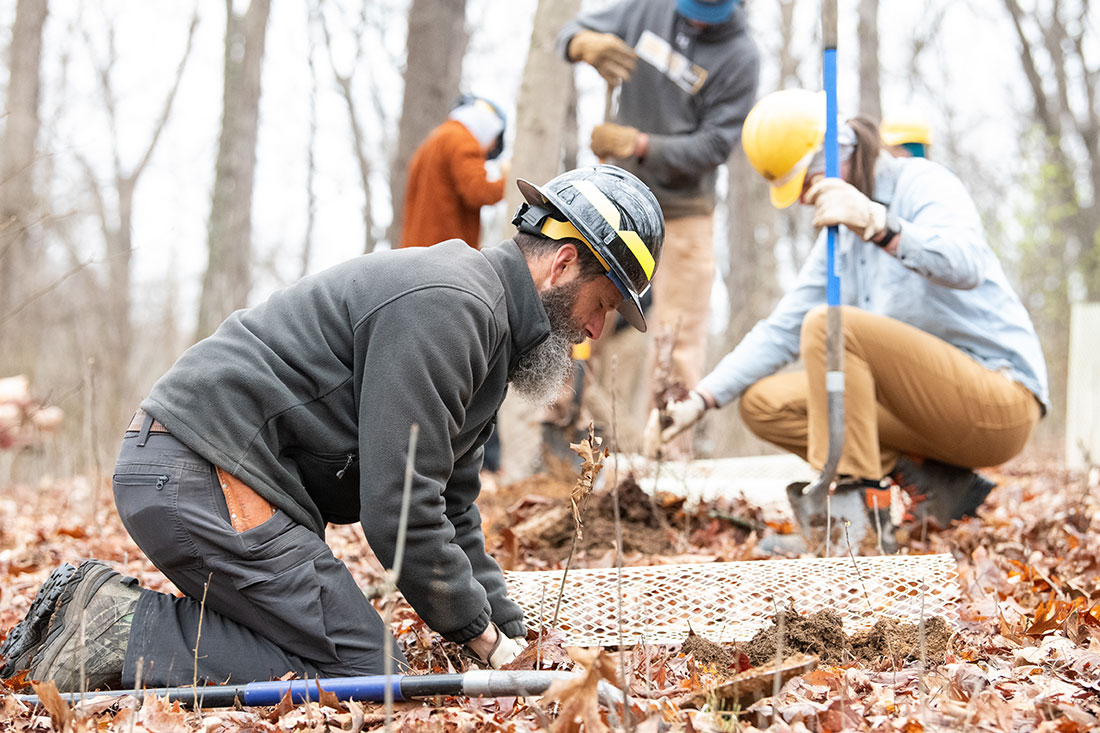
Photo Credit: Nathan Cornetet / American Forests
“WE REACHED our new home about the time the State came into the union. It was a wild region, with many bears and other wild animals in the woods. There I grew up.” — President Abraham Lincoln
On the edge of the nation’s frontier, the untamed southern Indiana woods helped shape a young Abraham Lincoln. And more than 200 years later, his legacy and a desire to restore the land around his boyhood home are shaping those same woods now.
When Lincoln’s family moved to Little Pigeon Creek in 1816, the forest was thick with towering oaks and hickories, and teeming with black bears, white-tailed deer and wild turkey. Lincoln’s family and other early settlers cleared much of the land for farming. By the late 20th century, maple and tulip trees that the Civilian Conservation Corps planted in the 1930s were widespread on the site.
In the 1980s the National Park Service, which operates Lincoln Boyhood National Memorial, set out to bring 12 acres of the forest back to the state it was in when the 16th president grew up splitting logs and reading books. That comprehensive project has thrived more recently with an infusion of support from Bulleit Whiskey, the muscle of a young adult conservation corps and assistance from American Forests.
Oaks are considered hardy and relatively climate-resilient but need lots of light to thrive. The understory, packed with maple trees, didn’t allow young oaks to mature. In 2017, the Park Service began clearing the understory of trees and plants that otherwise would impede the growth of new hickory and oak trees. Since then the Park Service and partners have planted 6,200 trees, including 2,000 white oaks, in the 12-acre area immediately adjacent to the Pioneer Cemetery, where Lincoln’s mother Nancy Hanks Lincoln is buried.
“The only thing that we have on these 200 acres that is contemporary to the Lincolns’ experience here is the forest. By restoring and maintaining that forest, park visitors can step back in time to the environment of Lincoln’s youth,” says Rhonda Schier, superintendent of Lincoln Boyhood National Memorial.
Giving the new seedlings the best chance to thrive is a labor of love — and fire. To reach the overstory and the sun, the young trees will need to out-compete surrounding plants that threaten to crowd them out. The National Park Service and the corps have given the fledgling seedlings a leg up by clearing vines and small plants within a few feet of each young tree.
Done by hand, it’s intensive maintenance. But “scientifically it gives them a major growth burst,” says Austin Rempel, director of forest restoration at American Forests. Support from Bulleit paid for tree planting and cycles of maintenance.
Ideally, the Park Service and its partners use fire — a process that once naturally thinned the forest — to help maintain it, says Jordan C. Bell, project manager with the Park Service. Earlier this year, the agency successfully used fire in an area where some of the first trees had been planted.
White mesh tubes or “baskets” help protect the youngest seedlings from another threat — the four-legged kind.
“In 2023,” Schier says, “we’re still looking for ways to keep the critters from eating our crops whether its corn on the farm or oaks in the forest.”